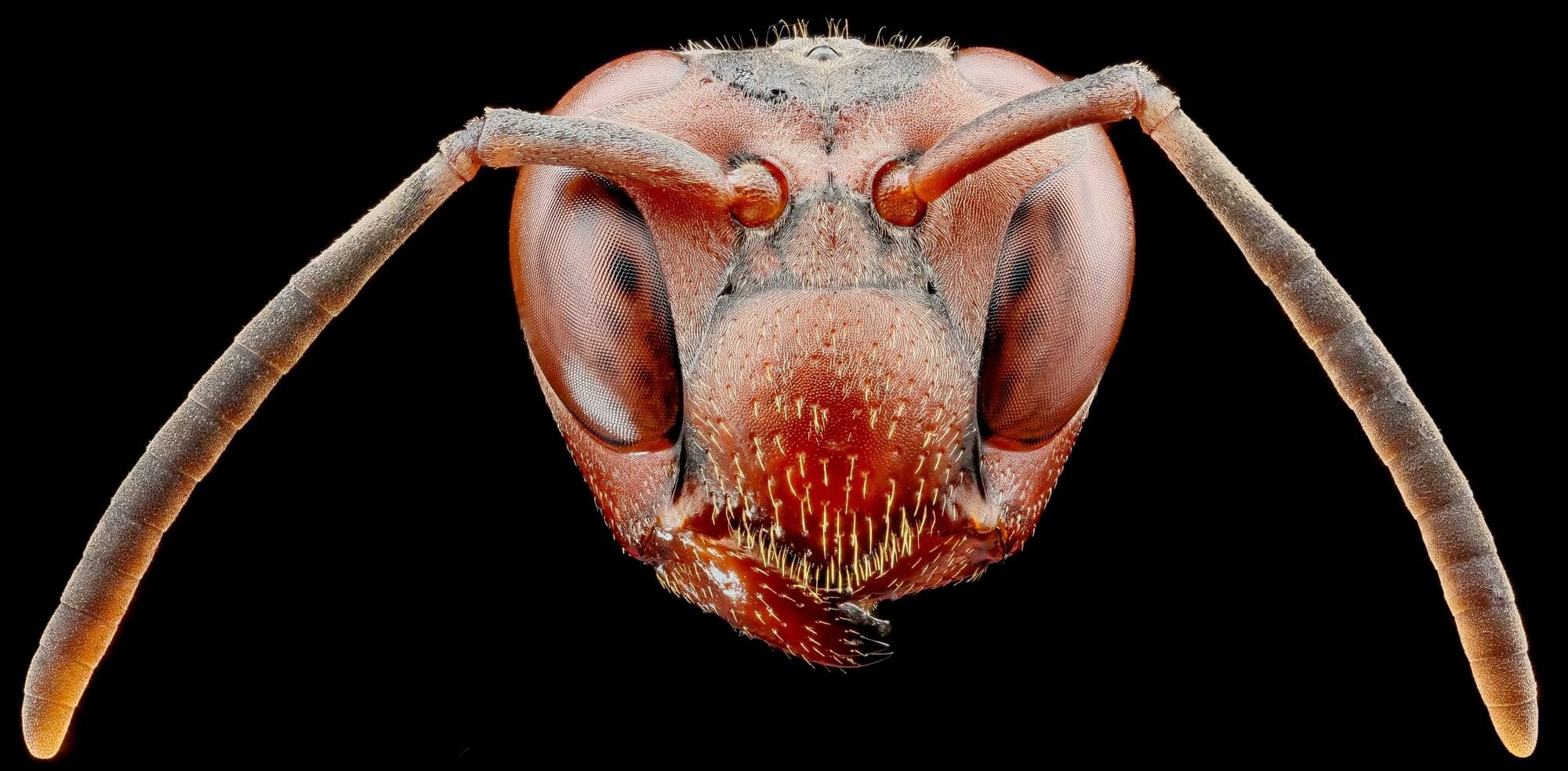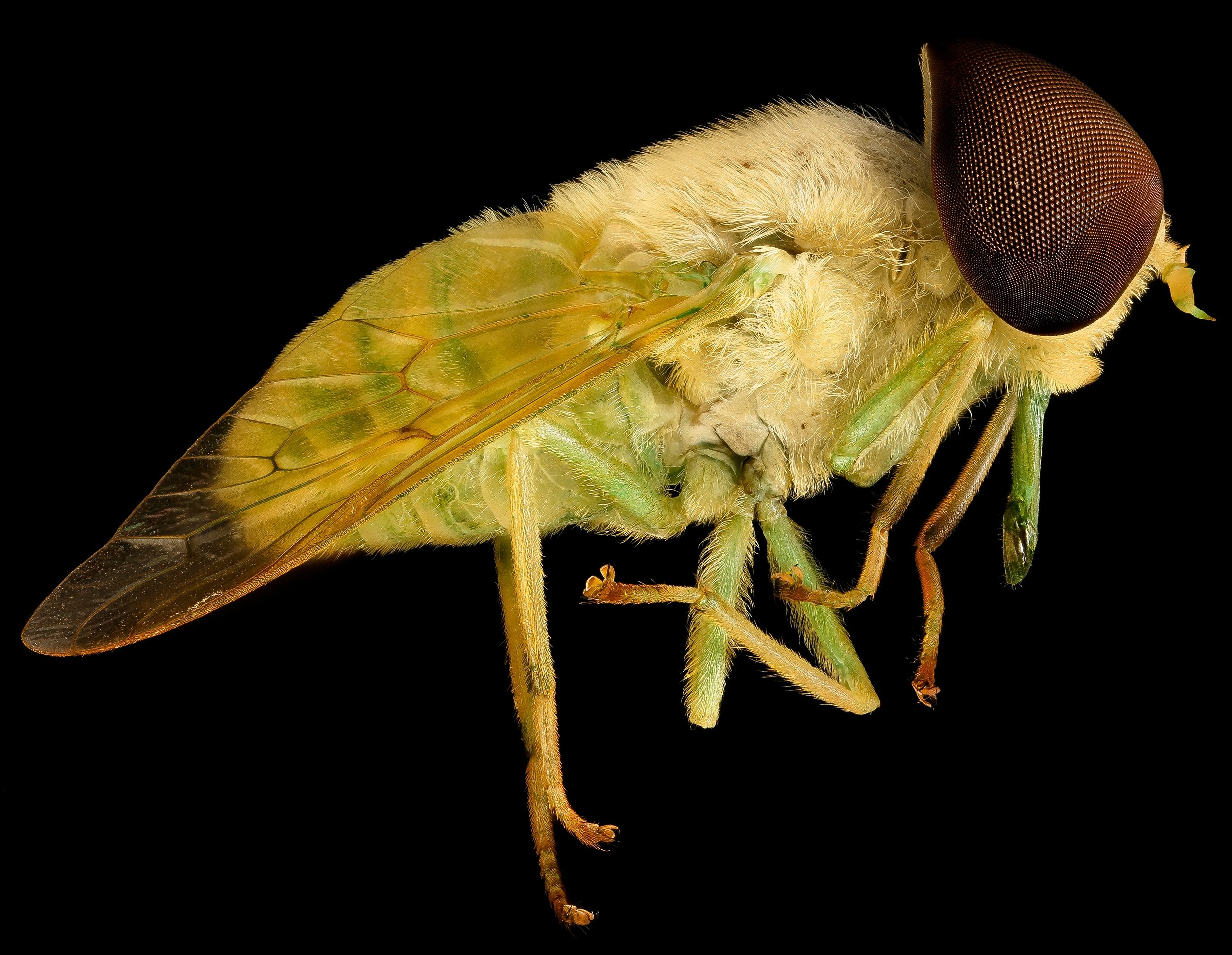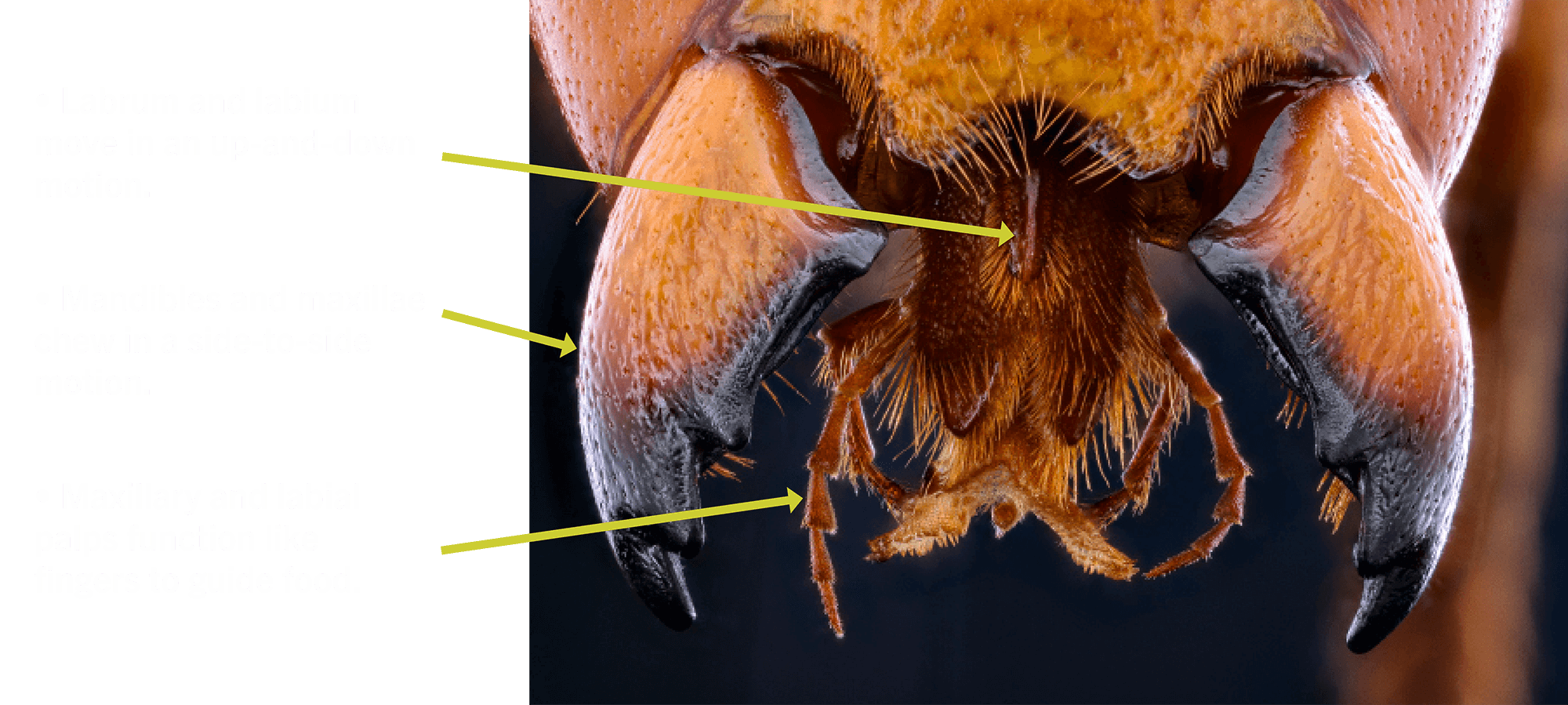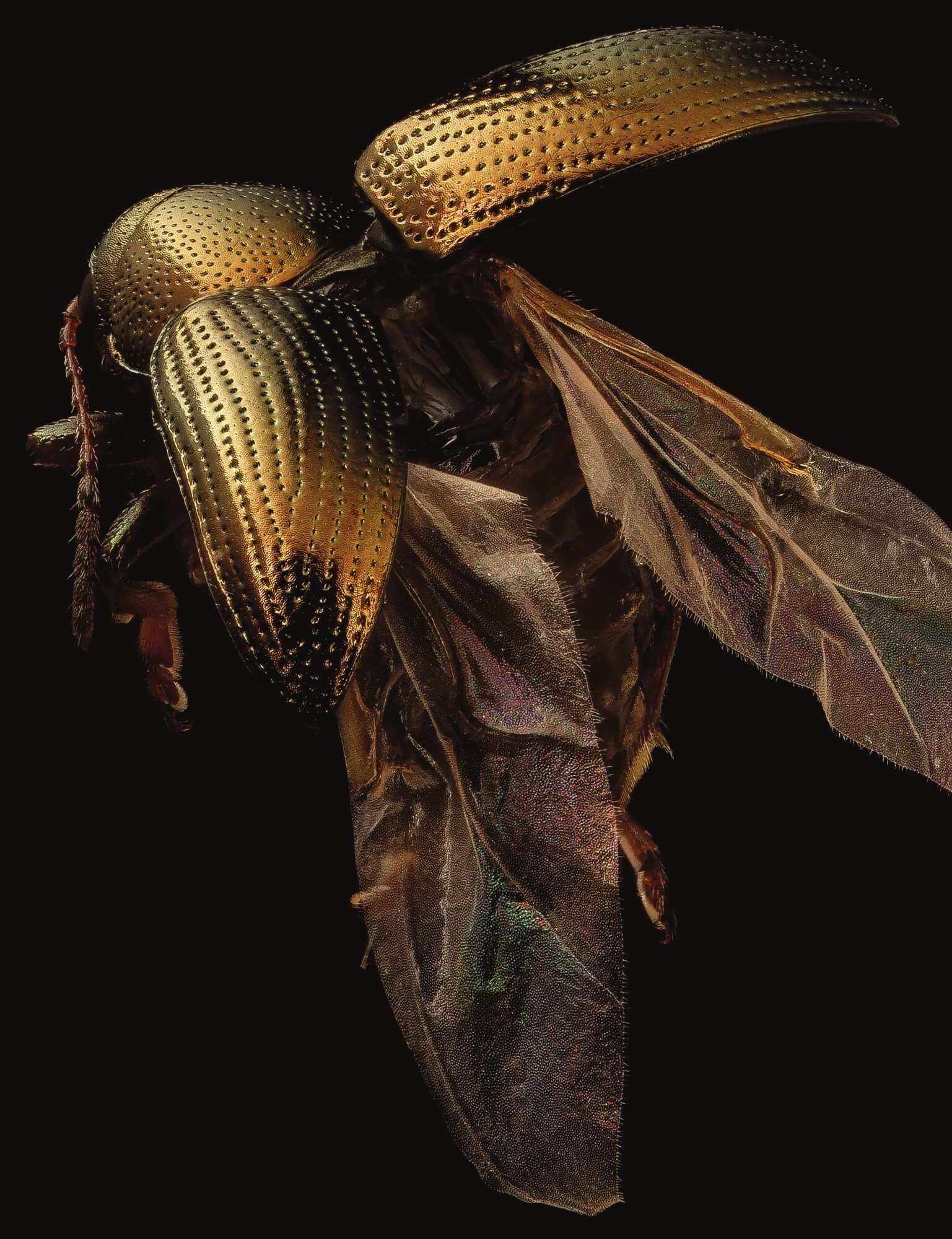Insect Anatomy
An insect’s three main body regions are the head, thorax, and abdomen.
The HEAD holds most of the sensory organs, including the mouth, antennae, and eyes. An insect’s mouth is much more complicated than our own mouths, and the shape varies widely between different insects. A pair of antennae are used to taste and smell the world. The compound eyes are made up of many tiny lenses; the more lenses, the sharper the vision. In addition to eyes on the head, some insects have light-sensitive organs in various places on their bodies.
The THORAX is the insect’s central body region. It contains all the muscles for the legs and wings, which are attached to this part of the body. Insects have six segmented legs, which take many different forms depending on their function. For example, legs might be modified for swimming, jumping, capturing prey, or holding on to a mate. Most insects have four wings, but some insects have none. Wings can be membranous, covered in loose scales, or modified into tiny gyroscopes or hardened covers.
The ABDOMEN is the final and largest body region. It holds most of the insect’s guts and reproductive organs. Some insects breathe directly through skin or gills, but most breathe through small holes on the sides of the body, called spiracles. The reproductive organs are often very complicated structures that can take many different forms. In male insects, they can be used as claws or sound-making apparatuses. In females they can be modified into piercing spears or stingers.
Honey Bee Internal Anatomy
Antennae
Most insects depend heavily on their two antennae to taste and smell the world around them. Insects with large and elaborate antennae usually have a better sense of smell. Some insects can detect odors from over a mile away!
Blister Beetle
Mylabris sp.
Princess Wasp
Ichneumonidae sp.
White Oak Borer
Goes tigrinus
Field Ant
Formica pallidefulva
Glowworm Beetle
Phengodes sp.
Red Milkweed Beetle
Tetraopes tetrophthalmus
Eyes
Insects have a pair of large compound eyes with many tiny lenses. Some insects’ eyes wrap around their entire heads, allowing for 360-degree vision. Many insects also have small, light-sensing eyes called ocelli on top of their heads
Eastern Pondhawk
Erythemis simplicicolis
Deer Fly
Chrysops sp.
Paper Wasp
Polistes metricus
Green Horse Fly
Chlorotabanus crepuscularis
Robber Fly
Asilidae sp.
Mouthparts
Insects have a wide variety of mouthparts, including mandibles for chewing and slicing, sharp piercing straws for drinking sap or blood, and long unrolling tongues used to harvest nectar from the deepest flowers.
Southern Armyworm Moth
Spodoptera eridania
Green Horse Fly
Chlorotabanus crepuscularis
Asian Giant Hornet
Vespa mandarinia
Festive Tiger Beetle
Cicindela scutellaris
Zebra Conchylodes Moth
Conchylodes ovulalis
Carpenter Bee
Xylocopa sp.
Wings: Form & Function
Insect wings are made up of thin membranes, supported by tiny veins. Most insects have four wings, even though it can sometimes be hard to tell!
Beetles
Beetles have membranous flying wings hidden underneath a hardened casing. The protective covering is actually the beetle’s modified forewings, called elytra. These hardened wings act as a shield.
Beetles belong to the insect order Coleoptera, meaning “sheath-winged.” There are more described species of beetles than any other type of insect!
Leaf Beetle
Chrysomelidae sp.
Marsh Fly
Trypetophtera canadensis
Flies
Flies use only a single pair of wings to fly. Their second pair of wings evolved into a tiny organ, the haltere. It’s a high-speed sensor that helps the fly perform advanced acrobatics during flight.
Flies belong to the insect order Diptera, meaning “two wings.”
Butterflies & Moths
Butterfly and moth wings are covered in thousands of tiny scales. These scales make many patterns and colors, and sculpt the flow of air over the wings during flight. Scales rub off when touched; this helps the insect escape from predators.
Butterflies and moths both belong to the insect order Lepidoptera, which means “scale-winged.” There are about 600 scales on every square millimeter of wing!
Formosus Jewelmark
Anteros formosus



























